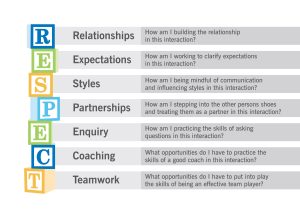6 Questions at Handover to Improve the Quality and Safety of Patient Care
 Questions at handover have the potential to improve the quality and safety of patient care. However, research has shown that the quantity and quality of health professionals’ questioning at handover is sub-optimal (e.g., Drach-Zahavy & Hadid, 2015; Rayo et al., 2014; Rixon, Braaf, Williams, Liew, & Manias, 2016).
Questions at handover have the potential to improve the quality and safety of patient care. However, research has shown that the quantity and quality of health professionals’ questioning at handover is sub-optimal (e.g., Drach-Zahavy & Hadid, 2015; Rayo et al., 2014; Rixon, Braaf, Williams, Liew, & Manias, 2016).
In other words, health professionals can ask more questions, and different types of questions, to improve the quality of their handovers, and handovers can act as a safety net to detect errors and thereby prevent them from reaching patients. A recent study by Rixon et al. (2016) has shown that during nursing handovers, nurses predominantly use questions to transmit patient-related information and do not take advantage of this forum as an opportunity to jointly reach a shared understanding of patients, for example by engaging in shared decision making about patient care.
So, what are the different types of questions that health professionals can ask to improve the quality of their handovers, and to potentially improve the quality and safety of patient care? The following is a list of six such questions, broken down by questions both incoming and outgoing health professionals can ask, questions incoming health professionals can ask, and questions outgoing health professionals can ask.
Questions incoming and outgoing health professionals can ask
- Checking questions (e.g., during handover: “So the patient needs a repeat troponin at 12 ?”)
Questions incoming health professionals can ask
- Requests for information (e.g., during handover: “Has the patient been given a red arm bracelet ((to denote allergies))?”)
- Challenges or collaborative cross-checks (e.g., during handover: “Did we check for MRSA?” I thought she was MRSA, too.”)
Questions outgoing health professionals can ask
- Knowledge checks (e.g., prior to handing over: “Do you know this patient?)
- Understanding checks (e.g., at the end of handover: “What can I clarify for you about these patients?”)
- Question-soliciting questions (e.g., at the end of handover: “What else do you need to know about these patients?”)
What other questions can you think of to add to this list? We’d love to hear your thoughts, and for you to share your own experiences (the good, the bad, and the ugly!) of handover questioning.
 Using the RESPECT model provides another layer to help inform effective communication and influencing.
Using the RESPECT model provides another layer to help inform effective communication and influencing.
For further information about the RESPECT model and also on how to be an effective questioner, see Chapter 3 “The Importance of RESPECT” and Chapter 5 “Ask Questions and Clarify” in “Communicating with RESPECT: An action learning approach for health professionals”.
References:
Drach-Zahavy, A., & Hadid, N. (2015). Nursing handovers as resilient points of care:
Linking handover strategies to treatment errors in the patient care in the following shift. Journal of Advanced Nursing, 71, 1135–1145
Rayo, M. F., Mount-Campbell, A. F., O’Brien, J. M., White, S. E., Butz, A., Evans, K., &
Patterson, E. S. (2014). Interactive questioning in critical care during handovers: A transcript analysis of communication behaviours by physicians, nurses and nurse practitioners task management online. BMJ Quality & Safety, 23, 483–489.
Rixon, S., Braaf, S., Williams, A., Liew, D, & Manias, E. (2016). The functions and roles of
questioning during nursing handovers in specialty settings: An ethnographic study. Contemporary Nurse, published online 21 November 2016. A full-text copy of this article is available here.